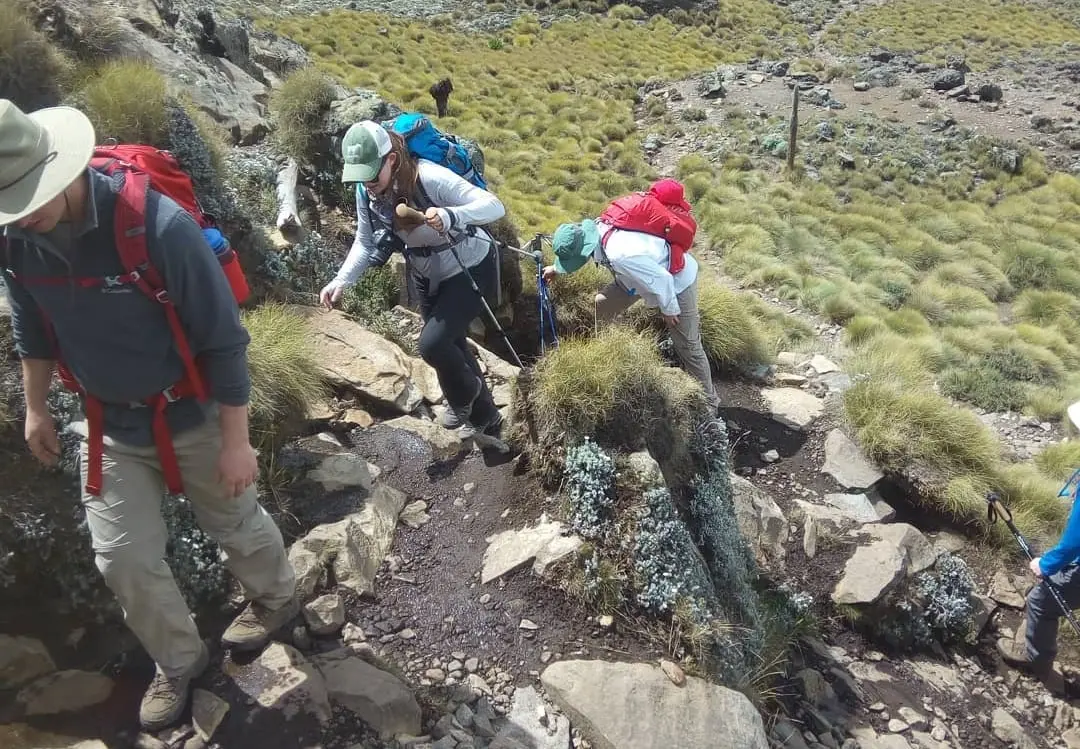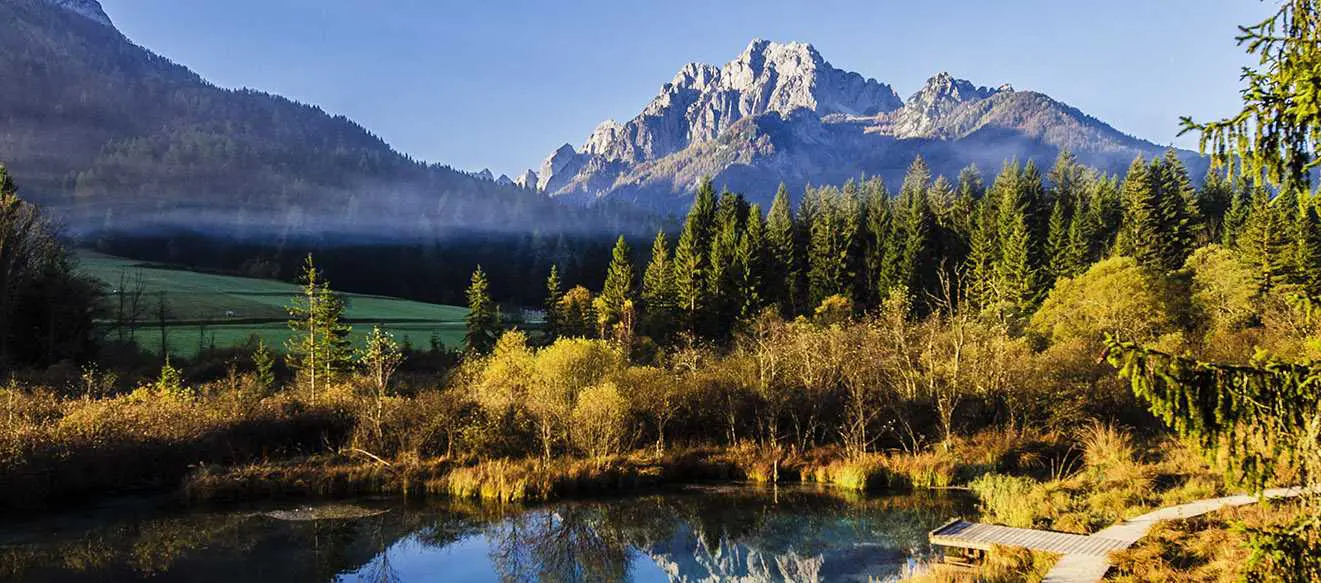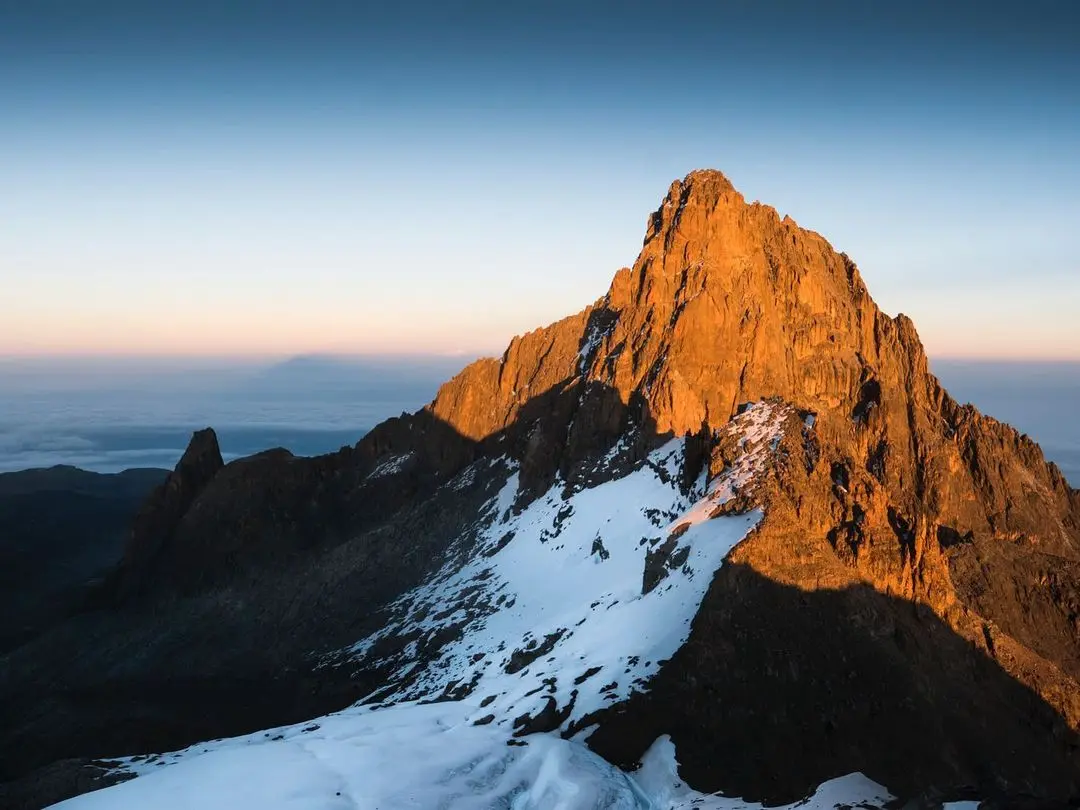Hiking Mount Kenya requires careful preparation and
awareness to ensure a safe and enjoyable experience. Key safety tips include
preventing altitude sickness, taking precautions with wildlife, carrying
essential gear, and knowing emergency procedures. Following these guidelines
will help you navigate the challenges of the mountain effectively.
Altitude Sickness Prevention
Proper Acclimatization Techniques
To prevent altitude sickness, it is crucial to acclimatize
properly. Spend 1-2 nights at the roadhead (3,000m) or higher huts (4,000m)
before proceeding to higher altitudes. This allows your body to adjust
gradually to the lower oxygen levels.
Importance of Hydration and Diet
Increase your fluid intake to 4-6 liters per day. Staying
well-hydrated helps your body cope with the altitude. Additionally, maintain a
light diet high in carbohydrates to provide sustained energy without
overburdening your digestive system.
Recognizing and Responding to Symptoms of AMS, HAPE, and HACE
Acute Mountain Sickness (AMS) can manifest as headaches,
nausea, and dizziness. If you experience these symptoms, rest and allow your
body to acclimatize. High Altitude Pulmonary Edema (HAPE) and High Altitude
Cerebral Edema (HACE) are more severe conditions that require immediate descent
and medical attention, as they can be fatal.
Use of Diamox Medication
Consider taking Diamox (acetazolamide) to help prevent and
treat altitude sickness. Consult with a healthcare provider before your trip to
ensure it's suitable for you and to understand the correct dosage and usage.
Wildlife Precautions
Potential Dangers from Buffalo, Elephants, and Other Wildlife
The forest zone of Mount Kenya is home to buffalo,
elephants, and other potentially dangerous wildlife. These animals can be
particularly dangerous at night, so it’s essential to be vigilant and cautious,
especially when traveling through these areas.
Guidelines for Safe Wildlife Encounters
Always maintain a safe distance from wildlife and avoid any
interaction that could provoke them. Use a spotlight at night and travel with
an expert guide who can help identify and steer clear of nocturnal animals such
as aardvarks and porcupines.
Importance of Not Feeding Animals
Feeding wildlife is not only dangerous but also harmful to
the animals. It disrupts their natural behaviors and can lead to increased
human-wildlife conflicts. Always observe animals from a distance and refrain
from feeding them, especially the hyraxes, which can often be found near
campsites.
Essential Gear and Clothing
Recommended Materials for Clothing
When hiking Mount Kenya, it’s essential to choose clothing
made from wool and synthetic insulated materials rather than cotton or down.
These materials are better at retaining heat and wicking moisture, keeping you
warm and dry in varying conditions.
Essential Items to Carry in a Daypack
Always carry essential items in your daypack, as you might
become separated from your porters or companions. These items include:
- Map
and compass
- Food
and water
- First
aid kit
- Warm
and waterproof clothing
- Signaling
mirror
- Matches
or a lighter
- Flashlight
Protection from the Equatorial Sun
The equatorial sun can be very intense, so protect your skin
and eyes. Use sunscreen with a high SPF, wear a hat, and don sunglasses to
prevent sunburn and eye damage.
Dressing in Layers for Temperature Changes
Mount Kenya's temperatures can range from 30°C during the
day to -10°C at night. Dress in layers to easily adjust to these changing
temperatures. Start with a moisture-wicking base layer, add an insulating
middle layer, and top it off with a waterproof and windproof outer layer.
Emergency Procedures
To ensure safety, entry and exit from Mount Kenya National
Park can only be made during daylight hours before 6 pm. This rule helps
prevent hikers from getting lost or encountering dangerous wildlife in the
dark.
Steps to Take in Case of an Emergency
In case of an emergency, contact a Kenya Wildlife Service
(KWS) ranger station immediately. These stations are permanently manned at
locations such as Teleki Valley, Austrian Hut, Met Station, and the park gates.
- Write
down the victim's condition and location.
- Mark
their position on a map.
- Be
familiar with the nearest source of help.
Hypothermia Prevention and Treatment
Hypothermia is a life-threatening risk on Mount Kenya due to
the cold temperatures at higher altitudes. To prevent hypothermia, find
shelter, remove any wet clothing, and create a warm environment. If the person
is conscious, give them warm fluids to help increase their body temperature.
General Hiking Tips
Hiking Mount Kenya alone is prohibited for safety reasons.
Hiring a certified guide ensures you have someone with extensive knowledge of
the mountain and wilderness expertise. A guide can assist with navigation,
provide valuable insights, and handle emergencies effectively.
Weather Preparedness and Packing Tips
Mount Kenya’s weather is highly unpredictable, with hot
days, freezing nights, and sudden rain or hail. Being prepared for these
conditions is crucial:
- Layering
Clothing: Pack clothing that can be easily layered to adapt to
temperature changes. Start with a moisture-wicking base layer, add an
insulating layer, and finish with a waterproof and windproof outer layer.
- Rain
Gear: Always carry a waterproof jacket and pants. Quick-drying materials
are preferable to avoid the discomfort and risk associated with wet
clothing.
- Insulated
Clothing: Include warm hats, gloves, and socks. Insulated jackets and
thermal underwear are essential for cold nights.
Hydration and Electrolyte Strategies
Staying hydrated is critical, especially at higher altitudes
where dehydration occurs more rapidly. Aim to drink 4-6 liters of water per
day. To avoid the monotony of plain water and ensure electrolyte balance:
- Electrolyte
Tablets: Add electrolyte tablets or powders to your water. These
replenish lost minerals and help prevent dehydration.
- Flavored
Drinks: Using flavored hydration packs can make it easier to drink
more fluids.
Respecting Wildlife and the Environment
Mount Kenya is home to diverse wildlife and fragile
ecosystems. To minimize your impact:
- Stay
on Marked Trails: This helps prevent erosion and protects the habitat.
- Do
Not Disturb Wildlife: Observe animals from a distance and never
attempt to feed them. Human food can be harmful to wildlife and can alter
their natural behavior.
- Leave
No Trace: Pack out all trash, including biodegradable items like food
scraps and toilet paper. Use designated rest areas and dispose of waste
properly.
Navigation and Terrain Management
Navigating the rugged terrain of Mount Kenya requires
preparation and caution:
- Maps
and GPS: Carry a detailed map and a GPS device. Make sure you know how
to use them.
- Trail
Markers: Follow established trail markers and stay on the designated
paths to avoid getting lost.
- Footwear:
Wear sturdy hiking boots with good ankle support and non-slip soles to
navigate rocky and uneven paths safely.
Additional Safety Tips for Hiking Mt. Kenya
Importance of Maintaining Hygiene on the Mountain
Maintaining personal hygiene during your hike is crucial for
health and comfort. Here are some tips:
- Hand
Sanitizer: Use hand sanitizer regularly, especially before eating.
- Wet
Wipes: Carry biodegradable wet wipes for cleaning hands, face, and
body.
- Toilet
Facilities: Use designated toilets where available. If you need to go
in the wild, dig a small hole at least 200 feet away from water sources
and trails, and cover it afterward.
Proper Waste Disposal and Leaving No Trace
Leaving no trace is essential to preserving Mount Kenya's
pristine environment.
- Pack
Out All Trash: This includes food wrappers, biodegradable waste, and
used toilet paper.
- Reusable
Containers: Use reusable water bottles and food containers to minimize
waste.
- Environmental
Responsibility: Pick up any litter you see along the way, even if it’s
not yours. Helping to keep the mountain clean benefits everyone.
Ensuring All Equipment is in Good Working Condition
Before setting out on your hike, thoroughly check all your
gear to ensure it’s in good working condition.
- Headlamps
and Flashlights: Ensure your headlamp or flashlight is functioning and
carry extra batteries.
- First
Aid Kit: Verify that your first aid kit is fully stocked with
essentials like bandages, antiseptics, pain relievers, and any personal
medications.
- Footwear:
Break in your hiking boots before the trip to avoid blisters and ensure
they are still supportive and comfortable.
Preparing Mentally and Physically for the Hike
Hiking Mount Kenya is both a physical and mental challenge.
Preparing adequately will enhance your experience.
- Physical
Training: Engage in regular cardiovascular and strength training
exercises. Hiking, running, and stair climbing are excellent ways to build
endurance.
- Mental
Preparedness: Understand the challenges you might face, including
fatigue, changing weather, and high altitudes. Visualize overcoming these
challenges and staying positive.
- Team Communication: If hiking with a group, maintain clear and regular communication. Establish a plan for staying together and managing any issues that arise.



